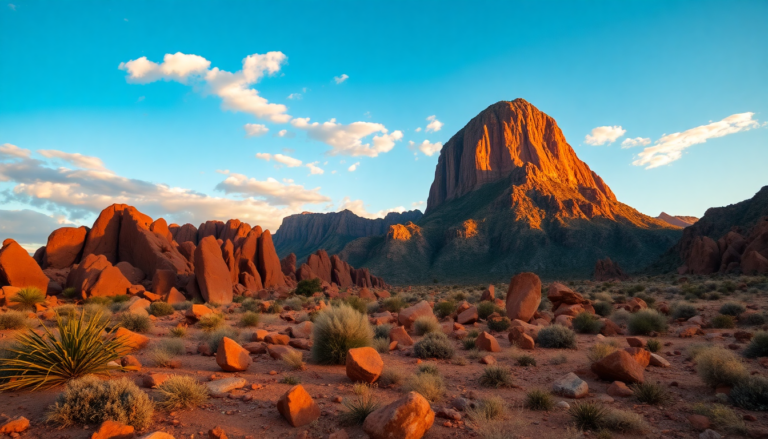Argomenti trattati
Spitzkoppe, located in the heart of Namibia, stands as a remarkable granite mountain that captivates visitors with its unique beauty and historical significance. Rising to an impressive height of 1,728 meters, this majestic peak challenges the horizon with its pointed summit, often drawing comparisons to the iconic Matterhorn. However, unlike the famous Alpine peak, Spitzkoppe is devoid of glaciers and lush forests, offering instead a raw desert landscape shaped by ancient geological processes.
Geological significance and natural beauty
The formation of Spitzkoppe is a fascinating story of geological evolution. It is not the result of tectonic collisions or volcanic eruptions but rather the remnants of a long-extinct volcano. Millions of years ago, molten granite was trapped beneath softer rock layers. Over time, relentless erosion from wind and extreme temperature fluctuations in the desert gradually revealed the smooth, rounded forms that dominate the area today. Five hundred million years ago, one would have walked over a landscape that was more than a thousand meters above the current ground level.
The stunning visual appeal of Spitzkoppe is further enhanced by its continuous transformation. The granite receives the constant wear of nature, leading to fissures and flaking that create striking patterns. Among its many wonders is a natural rock arch that appears to bridge the gap between earth and sky, attracting photographers and adventurers from around the globe. The experience of observing the mountain shifts dramatically with the changing light; depending on the time of day and vantage point, Spitzkoppe’s contours and colors evolve, presenting an ever-changing canvas.
Camping and exploring the surroundings
For those who wish to immerse themselves in this breathtaking environment, spending a night at one of the camping sites at the foot of the mountain is highly recommended. As dawn breaks, the granite illuminates in shades of pink and orange, creating a mesmerizing display that captivates even the most jaded souls. The only sounds to accompany this spectacle are the whispers of the wind and the subtle movements of the desert’s often-invisible wildlife.
While the peak of Spitzkoppe may not exceed 1,728 meters, climbing it is not an endeavor for the inexperienced. The granite surfaces can be smooth and challenging, demanding skill and caution. The first recorded ascent took place in 1946, and since then, many seasoned climbers have attempted to conquer its heights, drawn not just by the technical challenge but also by the extraordinary panorama that awaits at the summit—a vast expanse of rocks, sand, and sky.
Exploring rock formations and ancient art
For those preferring to explore without the use of ropes and gear, Spitzkoppe offers countless opportunities for enchantment. The rock formations surrounding the mountain appear as if sculpted by a visionary artist, featuring rounded boulders, spires, crevices, and even natural pools that collect rainwater. These “rock pools” create small mirrors that reflect the desert sky after rare downpours, adding to the area’s allure.
Beyond the arch and rock pools lies an even more intriguing area known as Small Bushmen’s Paradise. Here, the landscape becomes wilder, reminiscent of a savanna, while the mountain unveils a narrative steeped in millennia of history. Within the narrow confines of Daub Cave, attentive visitors can discover something far more ancient than the mountain itself: the rock paintings of the San people. These simple yet eloquent figures depict scenes of hunting, animals, and survival strategies, and they have been designated a National Monument due to their cultural and anthropological significance.
These illustrations were not merely decorative; they served as maps and coded messages for fellow tribe members. Some drawings indicate sources of water, while others offer insights into local wildlife suitable for hunting. It is remarkable to consider how these people thrived in such a harsh environment, communicating through a language composed of just four clicks made with their tongues and utilizing plant toxins for hunting.
Reaching Spitzkoppe
Traveling to Spitzkoppe from Swakopmund is straightforward. The journey begins along the B2 road for approximately 108 kilometers, followed by a turn onto the D1918 for 17 kilometers, and finally onto the D3716 for another 12 kilometers. The last two segments consist of gravel roads that can be uneven at times. Some travelers suggest that speeding can reduce vibrations, but it might be wiser to slow down, take a breath, and let the landscape prepare you for the encounter with one of Namibia’s most extraordinary wonders.

